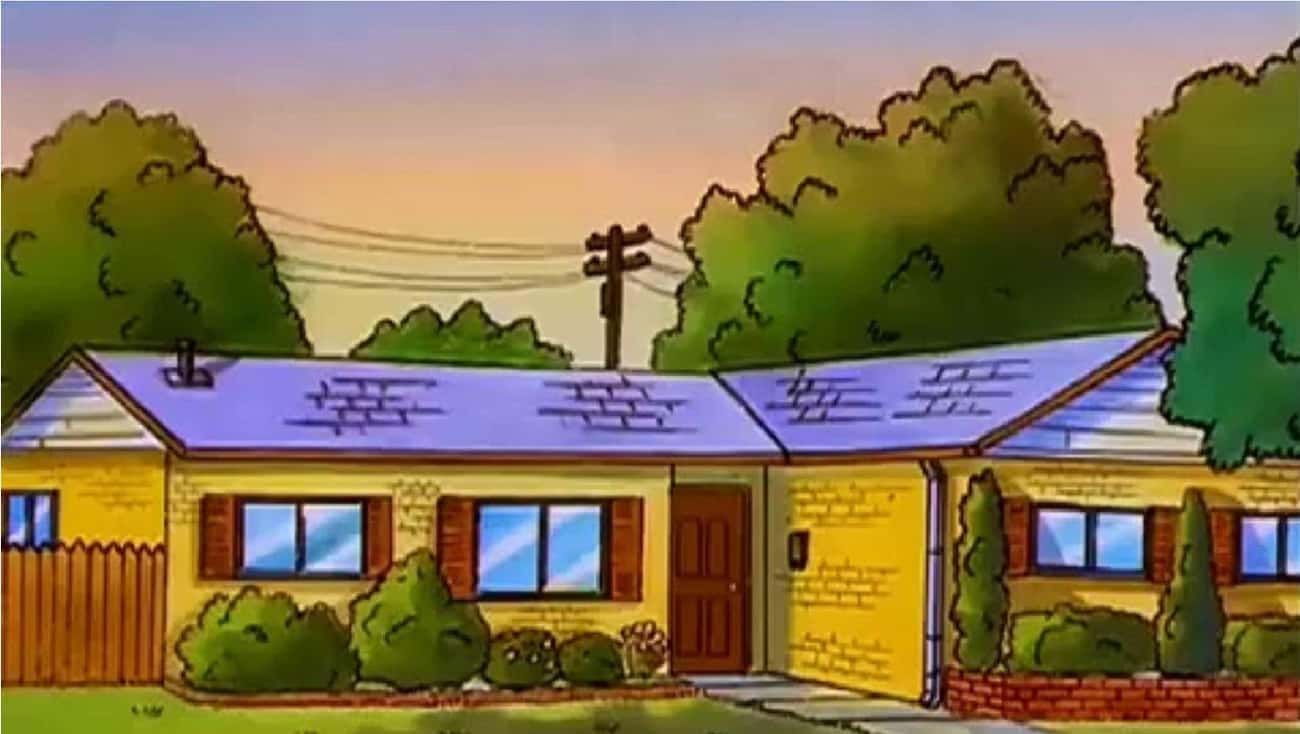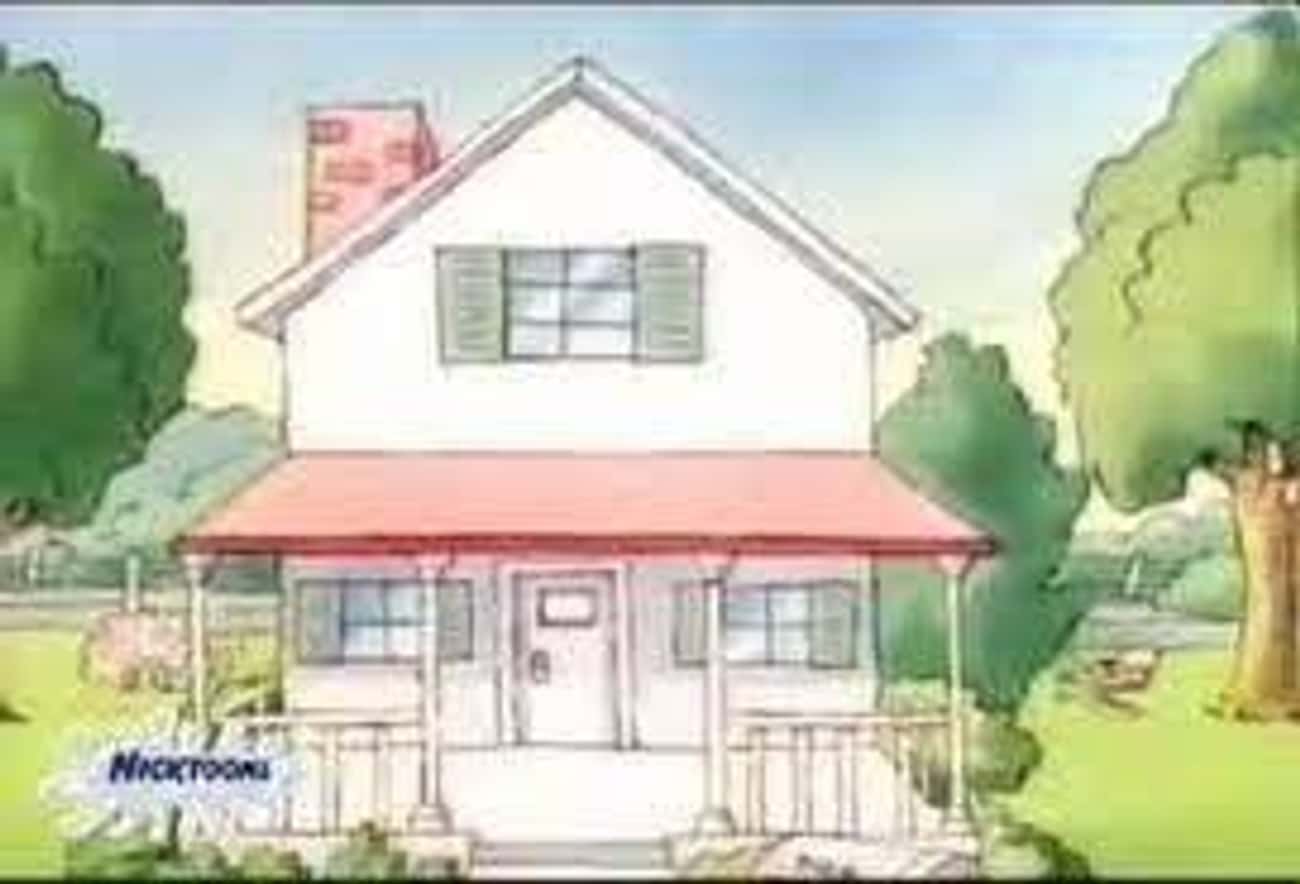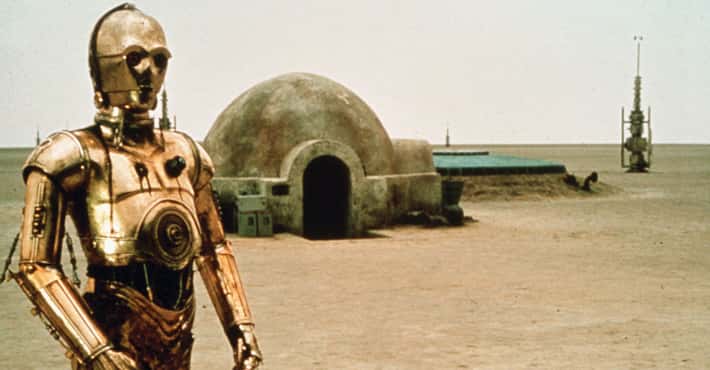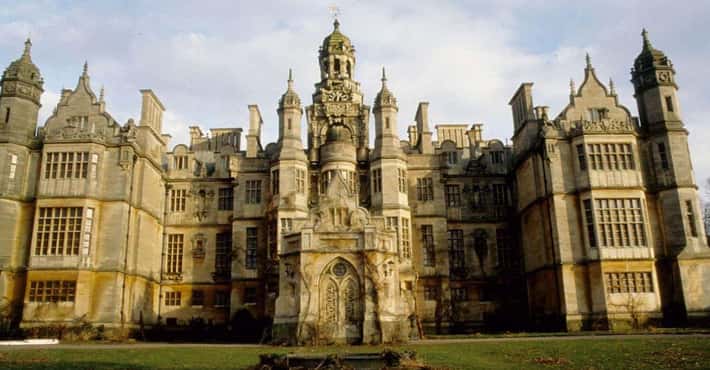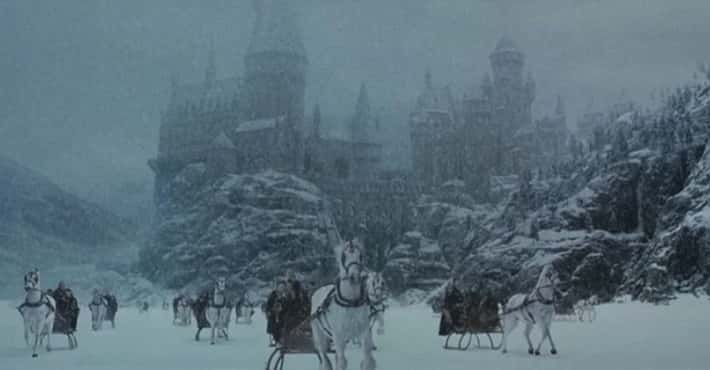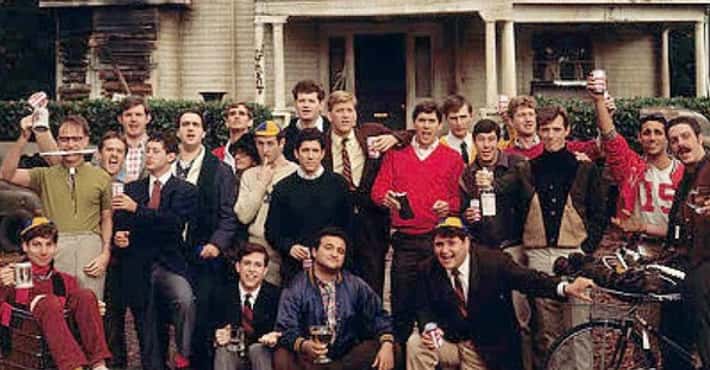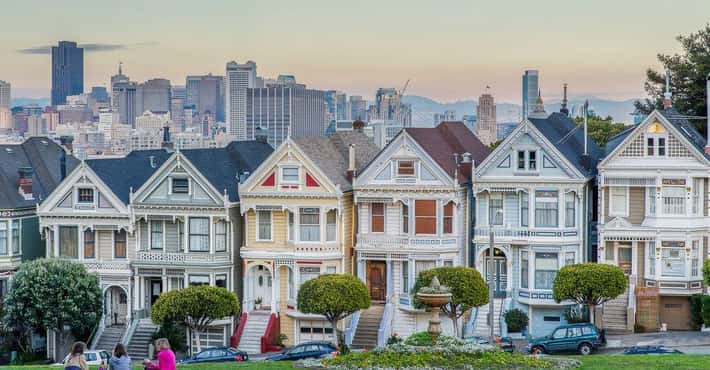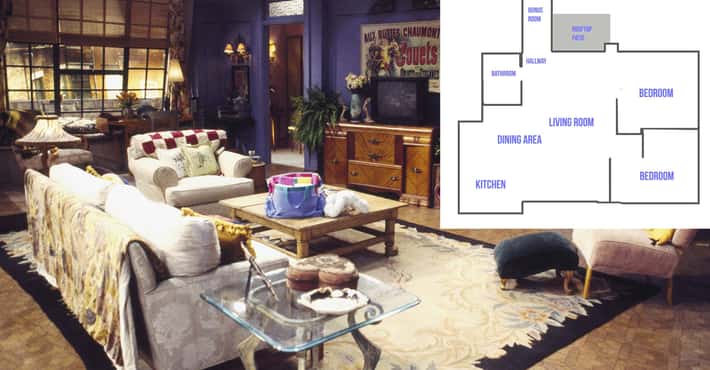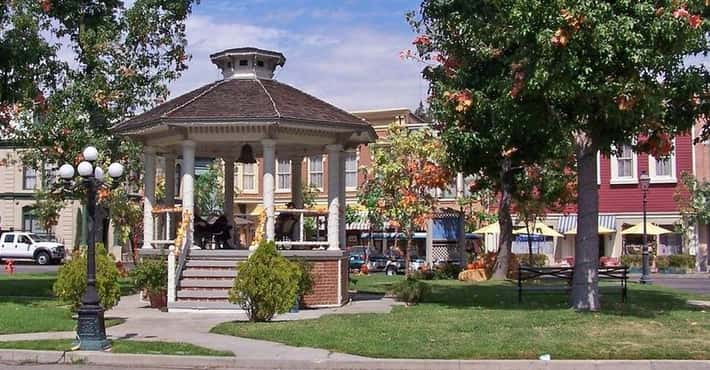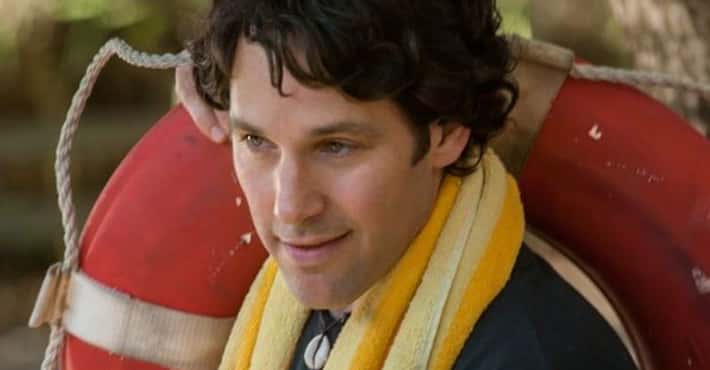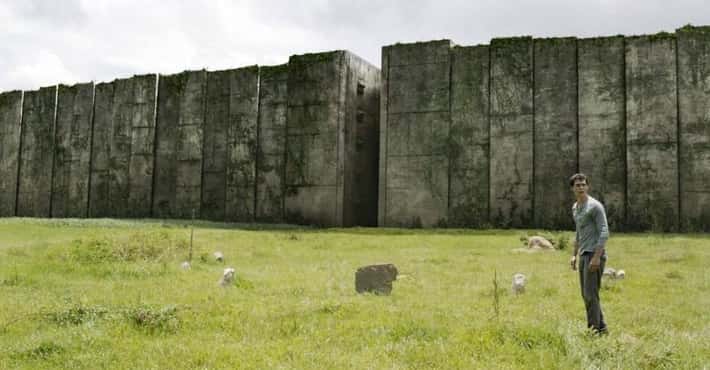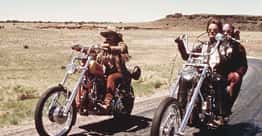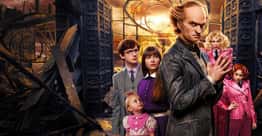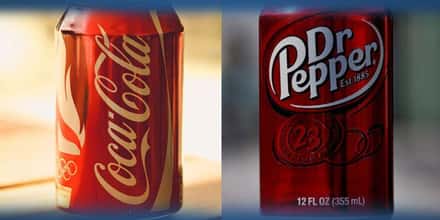
The Actual Values Of Famous Cartoon Homes Today
- Photo: Fox1728 VOTES
Location: Arlen (fictional), TX
Value: $200,000
One of the more grounded items in this list, Hank Hill’s modest three-bedroom ranch in a small Texas town should be well within his means. Arlen is a fictional locale whose size and precise location sometimes change. One episode puts the population at 145,300, while another has it at only 1,454. The location is similarly contradictory.
Arlen could really be just about anywhere within the vicinity of Dallas, although Richardson has been mooted as the main source of inspiration. A similar single-family home in Richardson wouldn't be overly pricey for someone as frugal as Hank Hill.
- Photo: Buena Vista Television2539 VOTES
Location: Bluffington (based on Richmond, VA)
Value: $250,000
The fictional town of Bluffington doesn't mention a specific location, but is loosely modeled after creator Jim Jinkins’s hometown of Richmond, VA. Bluffington is very much a company town in the pocket of the wealthy Bluff family. It probably has a pretty dark past, depending on how closely American history in Doug’s world follows real life. There’s also something quite unsettling about Bud Dink when you revisit the show as an adult and the little dual-income-no-kids reference went completely over your head as a child.
Race doesn’t seem to apply in Doug’s world, given the wide array of colors used for characters, but the purple characters do seem to be better off than most. Surprisingly, a light-hearted children’s cartoon doesn’t actually get into the minutiae of its world’s social and political dynamics.
Using Bluffington as a proxy for Richmond, the Funnie residence shouldn’t break the bank even in today’s red-hot housing market. A modest three-bedroom Cape Cod on a sizable lot in that neck of the woods shouldn’t be too far north of $250,000.
- Photo: Fox3520 VOTES
Location: Quahog (fictional), RI
Value: $300,000
In the words of a news segment in an early episode, the Griffins are a “lower-middle-class Irish Catholic family.” Lois comes from a wealthy background but turned her back on the family fortune to be with Peter, whose own background was far less affluent. The finances of the Griffins vary wildly from episode to episode, but money troubles never seem too far away. The show is set in a fictional Rhode Island town; its coastal location would make either Providence or Cranston the nearest real-life equivalents.
A similar four-bedroom Cape Cod would fetch somewhere north of $300,000 in Cranston. It would be difficult but not totally impossible for Peter and Lois to cover the mortgage on his salary in a brewery and her part-time teaching work.
- Photo: Nickelodeon
Location: Bikini Atoll
Value: $4
A fast-food worker being a homeowner is probably the least realistic aspect of a show about talking marine fauna that cook burgers underwater. As a fry cook at the Krusty Krab, SpongeBob’s pay varies wildly over the course of the show, from envelopes of cash weekly to mere pennies annually. Although Bikini Bottom would technically come under the supervision of the US, the Department of Labor probably wouldn’t be able to do very much about Mr. Krabs's blatant violations, so minimum wage ordinances would be difficult to enforce.
Bikini Bottom’s location directly underneath a test site for nuclear weapons means the area would still have dangerously high levels of radiation, which might go some way in explaining the existence of an advanced underwater society. But in terms of land value, the area is effectively worthless, which means that the home’s value would only derive from its structure. A pineapple.
SpongeBob is supposed to be an Aplysina fistularis (yellow tube sponge), meaning the pineapple he resides in would have to be an unusually large one. It’s probable the pineapple itself originated from the Philippines, from which a 26-pound (12 kg) carton ships for roughly $10. If we assume the pineapple is twice the size of a regular one, then it works out at about $1.66 wholesale. Factoring in the mark-up, renovations, and the fact a mortgage company wouldn’t authorize a loan greater than four times SpongeBob’s meager income, we’re probably only looking at about $4 total.
- Photo: Hanna-Barbera Productions5377 VOTES
Location: Orbit City
Value: $6,000,000 (2062 price)
There are some bleak theories about why the futuristic Jetson family lives so far above the Earth's surface. Stories that range from a wasteland caused by nuclear war (the show debuted in the same era as the Cuban Missile Crisis) to environmental collapse or even a zombie apocalypse are certainly entertaining, but they're all just plain wrong. We do, in fact, see the Earth's surface in the show - as early as the seventh episode, to be precise.
The same socioeconomic conditions that plague our present all seem to be apparent in the Jetsons' time, too. Despite the future having apparently automated every single menial job out there, and having found a way to mine the endless riches of asteroids, there are still homeless people living on the Earth's surface. George Jetson's sinecure white-collar job above the surface is far removed from those problems.
The family has a plush, spacious home in the Skypad Apartments building in Orbit City. The buildings aren't actually as high up as you might think; as one episode reveals, no building is allowed to be more than 2,200 feet off the ground. The real world's tallest building is actually higher than that. The show is supposed to take place in 2062, meaning we're closer to that era than when the show debuted back in 1962.
We can safely assume that Orbit City is a desirable and affluent area in the future and will be priced accordingly. Because it's clearly been influenced by Seattle's Space Needle, we'll use higher-end apartments in the Emerald City as a rough guide.
Inflation is prone to fluctuations, but if we imagine a steady 3.5% annually for the next 40 years, a 2062 dollar would be worth $4 in today's terms. So George Jetson would probably be forking out about $6,000,000 for his very high-rise apartment in his own time - or about $1,500,000 today.
- Photo: Fox6613 VOTES
Location: Springfield, OR
Value: $400,000
The Simpsons have been on the air so long that the family’s finances have gone from a joke to a fantasy for audiences. Decades of stagnant wages and soaring home prices make Homer’s cushy lifestyle achieved on the back of so little effort almost seem like a cruel joke today. This was touched upon in a 1997 episode, but the gulf has only widened in the quarter-century since.
The four-bedroom residence at 742 Evergreen Terrace is approximately 2,200 square feet. The property has a basement, attic, and generous front and back yards. The location of Springfield was deliberately vague for many years, but finally settled in 2007 with the release of the movie. Show creator Matt Groening presented Springfield, OR, with a plaque proclaiming it to be the "real Springfield." An equivalent property in the "real" Springfield would fetch at least $400,000.
- Photo: Buena Vista Television7436 VOTES
Location: Duckburg, Calisota
Value: $25,000,000
You may be surprised to learn that the money bin an anthropomorphic Scottish duck swims in for recreation isn’t actually physically possible - not just because you can’t actually swim in coins, but because there isn’t enough gold in the world to fill it to that level without destroying the world’s economy. One estimate puts the total value of gold contained in the bin at $5.4 trillion. We’ll leave that astronomical figure out of the total and just concentrate on Scrooge McDuck's mansion.
McDuck Manor is in the coastal town of Duckburg in the fictional state of Calisota. A map reveals it to be an approximation of northern California. The closest real-life equivalent is the city of Eureka. Average home prices there are well above the national average but easily within McDuck's means. The exact dimensions of the manor are largely left to the viewer’s imagination and have undergone radical changes in the original comics, TV shows, and movies.
One claim suggests the gigantic mansion has as many as 75 rooms. This would put it in the same ballpark as the Biltmore Estate in North Carolina, the largest home in America. The cost of just the house comes in at about $37 million, so the smaller but no less luxurious McDuck Manor would probably be about $25 million.
- Photo: Fox8379 VOTES
Location: Ocean City, NJ
Value: $900,000
The exact location of the Belcher apartment and restaurant isn't clearly stated, but Loren Bouchard confirmed its northeastern setting in a 2012 interview:
I grew up in the New England area, and there were lots of beach towns like it, though we don’t want to be in New England... because Family Guy has Rhode Island sewn up. But basically I picture it somewhere in the outer boroughs or on the northern Jersey shore.
Going by a few other clues offered in the show and the features of the town, the closest real-life equivalent appears to be Ocean City, NJ. The restaurant and three-bedroom apartment over it come to just over 2,000 square feet; a 2014 estimate calculated the price per square foot at $387, giving it a value just shy of $800,000. Prices have risen steeply since then, and such an attractive location in a coastal town would command a very pretty penny indeed. Based on recent trends in the area, $900,000 would be a fairly conservative estimate for its value today.
Because the Belchers don't own the property, they are pretty much at the mercy of their eccentric landlord Mr. Fischoeder when it comes to the monthly rent. The same 2014 estimate put the rent at $4,000 if the Belchers' rate followed statewide trends, then a further 15% would have them shelling out about $4,500 today. It's little wonder they have to work so hard and that so many episodes center on their financial woes.
- Photo: Nickelodeon9322 VOTES
Location: Hillwood, WA
Value: $1,500,000 - $2,000,000
Arnold lives with his grandparents at the Sunset Arms, a 16-room boarding house in the fictional city of Hillwood in Washington. Although the architecture, yellow cabs, and climate strongly suggest Brooklyn, NY, the city Arnold calls home is actually supposed to be in Washington. The show fuses elements of Brooklyn, Portland, and Seattle, but the latter is the closest to Hillwood geographically.
Had the show actually been set in Brooklyn, the value would be much easier to figure out. But its creators show scant regard for writers trying to work out those little details two decades later. The old brick building at 4040 Vine Street was probably constructed in the mid-1800s and modernized over time. A multi-family home in the same style and equivalent size in Brooklyn would be worth quite a bit nowadays; even with only three bathrooms for so many people, Arnold’s grandparents would get at least $3 million for it. There’s not really an equivalent to be found in Seattle, so this estimate offers more of a range than a specific value.
A newer multi-family lot of similar size would bring in at least $4 million in Seattle, so a much older building would probably get somewhere around $1.5 to $2 million, depending on the exact location. With only four permanent residents of dubious reliability for rent, it would probably make much more sense for Arnold's grandparents to sell the place.
- Photo: Nickelodeon10351 VOTES
Location: Los Angeles, CA
Value: $1,200,000
The Pickles home is a four-bedroom with an attached garage that sometimes changed sides, depending on the episode. The location was revealed in an episode where Didi receives an invoice. The address of the Pickles residence is given as 1258 N. Highland Avenue in Los Angeles - the former location of Klasky Csupo, the company that created the show. That places the Pickles home in Hollywood, so it's a bit of a mystery how Stu and Didi could possibly afford it, given their occupations.
A four-bedroom home in that part of L.A. would be incredibly expensive, and if you factor in the decent amount of yard space, it's unlikely you'd manage to get anything like that for less than a million dollars. A rough estimate for something with a similar architectural style and lot size places it at about $1.2 million.
- Photo: ABC11301 VOTES
Location: Bedrock, Pangea
Value: $200,000 (2022 equivalent)
The real-life "Flintstone house" in Hillsborough, CA, is worth almost $3 million, but that's not a very useful guide for the price of Fred's home. We have to factor in the economic conditions of the Stone Age and the fact that granite seems to be a ubiquitous material in everyday life.
Granite as the standard choice of material seems odd at first glance, given how expensive, heavy, and labor-intensive building virtually everything from stone would be. But it makes sense if you consider the power dynamics of the world the Flintstones inhabit. The proprietors of the Slate Company would have a vested interest in making sure that stone is the default material used, and their financial reach would be such that they could lobby the government to draft laws requiring stone use in the construction of goods and materials.
The economy of the Flintstones seems to be one on the brink of disaster. The glaring inefficiencies are all around them, and credit seems to be dished out a little too readily to those of limited means. There's also the cruelty of a permanent underclass of dinosaur slaves we're not going to get into. The citizens of Bedrock are over-leveraged, and many are employed in jobs extremely vulnerable to layoffs (those guys in the vending machines are surely for the chopping block). It seems only a matter of time before a critical mass of job losses kick off a round of credit defaults and repossessions.
Fred's salary in sand dollars, the fiat currency of the Flintstones' world, isn't specified, but a dino-crane operator is probably the equivalent to a modern one. In which case, Fred probably brings home about $40,000 annually. This should restrict him to a home no more than $160,000 in value, but the irresponsible ease of credit extended to him by lenders can push that out further. With the amenities installed and pool in the backyard, 345 Cave Stone Road is probably worth about $200,000 in today's money. Just like most of the town of Bedrock, Fred's on borrowed time.
- Photo: Comedy Central12283 VOTES
Location: South Park, CO
Value: $500,000
Before moving out to Tegridy Farm in season 27, Randy Marsh and his family lived in a home practically identical to almost all the other residences seen in South Park. The only difference between most of the houses seems to be the color of the exterior. Stan's house has three bedrooms, a front room that includes a dining room, plus a basement and a garage. Although the homes of the characters are hardly noteworthy, the location of the town means that they would carry a much heftier price tag than you might expect.
Fairplay, CO, lays claim to being "the real South Park," though it is much smaller and more rustic than the town seen in the show. You’d be hard-pressed to find a residence in Fairplay that resembles the houses in South Park, but if we are to take the average home costs of Fairplay into account, we’re looking at about $500,000. The real-life inspiration for the quiet little redneck mountain town of South Park has seen its property values skyrocket in recent years.


